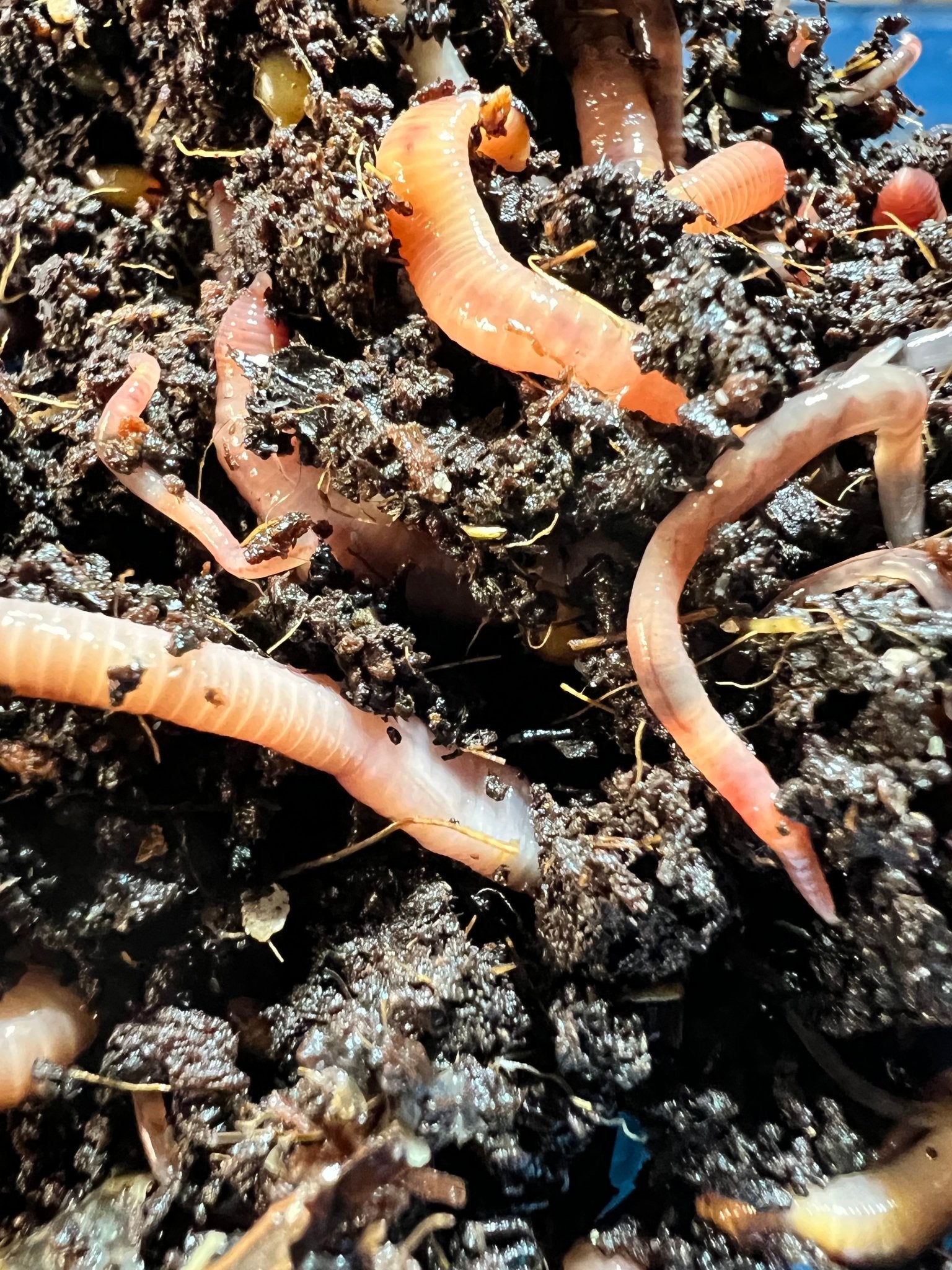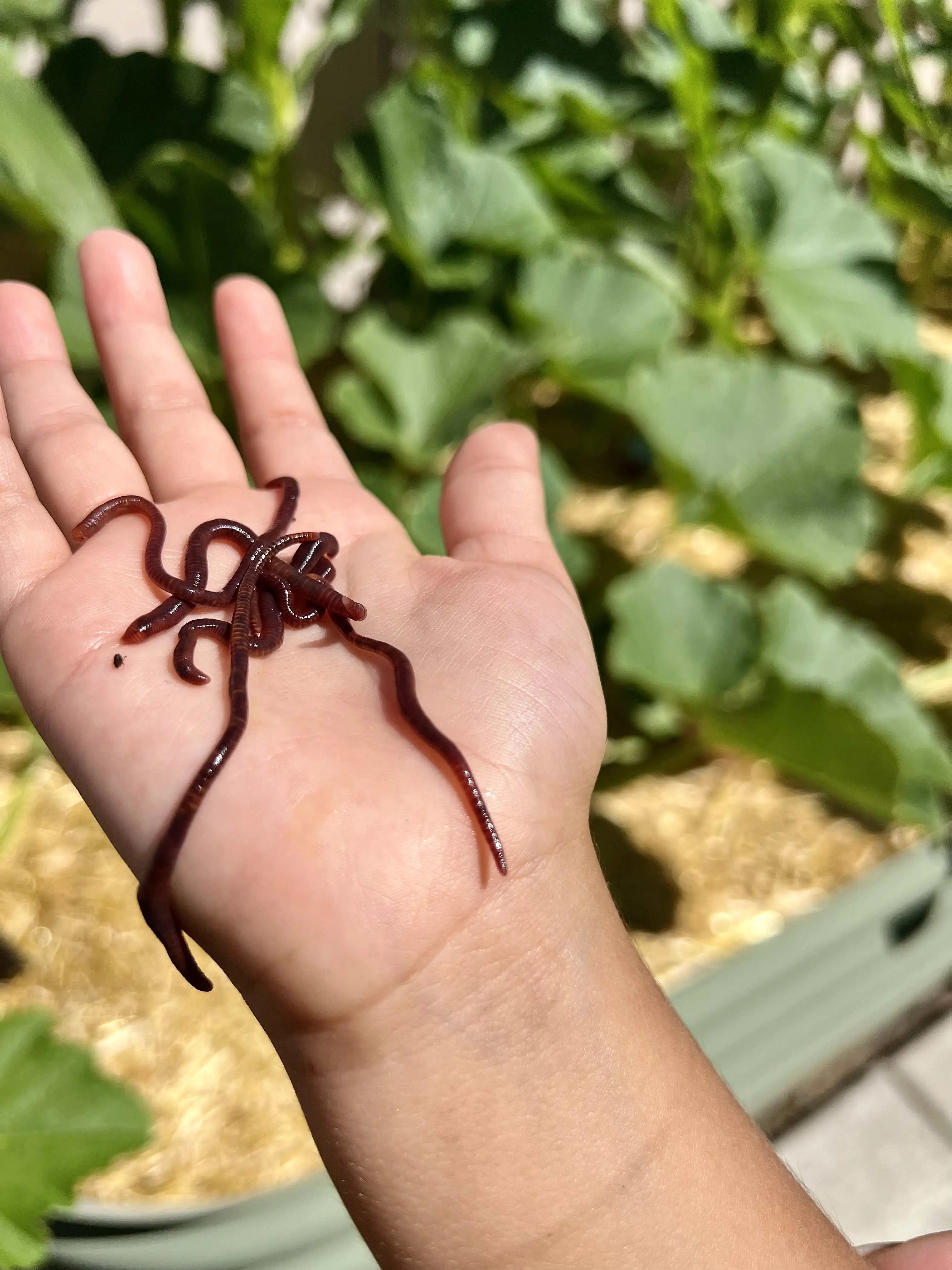Red Wigglers: The Unsung Heroes of Organic Waste Recycling
Red wigglers, or Eisenia fetida, function as important agents in the organic waste recycling process, transforming disposed of materials into useful vermicompost. Their reliable breakdown of raw material not just boosts dirt top quality but also adds to sustainable waste management practices. As the globe significantly seeks remedies to battle waste build-up and enhance farming performance, comprehending the role of these worms ends up being crucial. What mechanisms allow them to thrive in compost settings, and just how can they be properly used in both property and industrial settings? Discovering these inquiries exposes the wider implications of vermicomposting in our ecological landscape.
What Are Red Wigglers?
The exceptional durability of red wigglers, scientifically recognized as Eisenia fetida, highlights their crucial duty in organic waste recycling. These tiny, reddish-brown earthworms are normally found in decomposing raw material, such as garden compost piles and manure loads. Lake Hickory Bait. Unlike other earthworm types, red wigglers thrive in nutrient-rich settings and are highly effective at breaking down organic products, making them important for vermicomposting

(Red Wiggler Express)In addition to their function in waste decrease, red wigglers add to dirt health by enhancing soil framework and oygenation via their burrowing activities (Lake Hickory Bait). Their existence in composting systems not just boosts decomposition rates however likewise advertises a lasting strategy to waste management, illustrating their significance in environmental preservation initiatives
Advantages of Composting With Worms
Composting with worms, specifically red wigglers, offers various advantages that enhance both waste administration and soil health and wellness. First, these worms effectively break down organic waste, converting it into nutrient-rich vermicompost that enriches soil. This process speeds up decay, permitting a quicker recycling of kitchen area scraps and other organic products contrasted to standard composting techniques.
Furthermore, the vermicompost created by red wigglers is including useful microorganisms, which help boost dirt structure, aeration, and dampness retention. This improves the general health of plants, advertising energetic growth and increased returns in yards and agricultural setups. The usage of worms in composting lessens the production of greenhouse gases, such as methane, adding to a much more sustainable waste monitoring system.

How to Start Vermicomposting
Establishing a vermicomposting system is an uncomplicated procedure that can produce substantial benefits for both waste monitoring and soil enrichment. To begin, select an appropriate container, such as a plastic container or wood box, with ample air flow openings to ensure proper airflow. The dimensions ought to ideally be around 2 feet by 3 feet, enabling sufficient area for the worms to prosper.
Following, prepare bed linen material, which can include shredded newspaper, cardboard, or coconut coir. This bed linen ought to be moistened to create a suitable habitat for the worms. As soon as the bed linens remains in location, introduce red wigglers (Eisenia fetida) into the bin, usually around one pound of worms for every square foot of surface area.
Following the placement of worms, include natural waste, such as vegetables and fruit scraps, coffee grounds, and crushed eggshells. Avoid including milk, meat, or oils, as these can produce odors and attract pests. Place the bin in a shaded, temperature-controlled area to keep ideal conditions for worm task. With these actions, you will successfully initiate a vermicomposting system that adds to lasting waste monitoring and enriches your dirt.
Preserving a Healthy And Balanced Worm Bin
(Red Wiggler Express)Keeping a worm container prospering requires routine attention and treatment to make sure the health of the red wigglers and the performance of the composting process. Correct maintenance starts with keeping track of the dampness levels; the bin needs to be damp yet not waterlogged. A great general rule is to preserve an uniformity similar to a wrung-out sponge.
Aeration is critical as well. Gently mixing the bed linens and food scraps every couple of weeks avoids compaction and makes certain that all worms have access to oxygen. Furthermore, it is vital to feed the worms appropriately. A balanced diet plan of vegetables and fruit scraps, coffee grounds, and crushed eggshells must be supplied in moderation to avoid overfeeding, which can cause smells and parasites.
Temperature level law is another her explanation vital aspect. Red wigglers flourish in a variety of 55 to 77 degrees Fahrenheit. If the bin ends up being as well hot or chilly, the worms might become worried - Lake Hickory Bait. Occasionally examine for indicators of wellness, such as worm populace growth and the existence of healthy castings. By diligently managing these variables, one can keep a durable and efficient worm bin.
Effect On Sustainable Living
The effective maintenance of a worm bin not just profits the health of red wigglers yet additionally contributes significantly to lasting living methods. By recycling natural waste, such as kitchen area scraps and yard particles, red wigglers assist divert significant amounts of product from land fills. This reduction in waste not just reduces greenhouse gas emissions yet likewise minimizes the ecological concern associated with waste administration.
Furthermore, the spreadings created by red wigglers work as a nutrient-rich organic plant food, improving dirt health and wellness and promoting plant development. This all-natural option to chemical plant foods supports lasting agriculture and horticulture practices, minimizing reliance on artificial inputs that can damage environments. Furthermore, worm composting fosters understanding of waste administration, urging individuals and areas to embrace even more sustainable routines.

Conclusion
In summary, red wigglers act as crucial factors to natural waste reusing with their effective disintegration of natural products. Their capability to create nutrient-rich vermicompost improves soil health and wellness and supports sustainable agricultural practices. By integrating vermicomposting into waste management strategies, individuals and areas can significantly reduce waste while advertising ecological sustainability. The duty of Eisenia fetida in promoting healthy communities highlights the significance of these organisms in attaining lasting living and improving soil fertility.